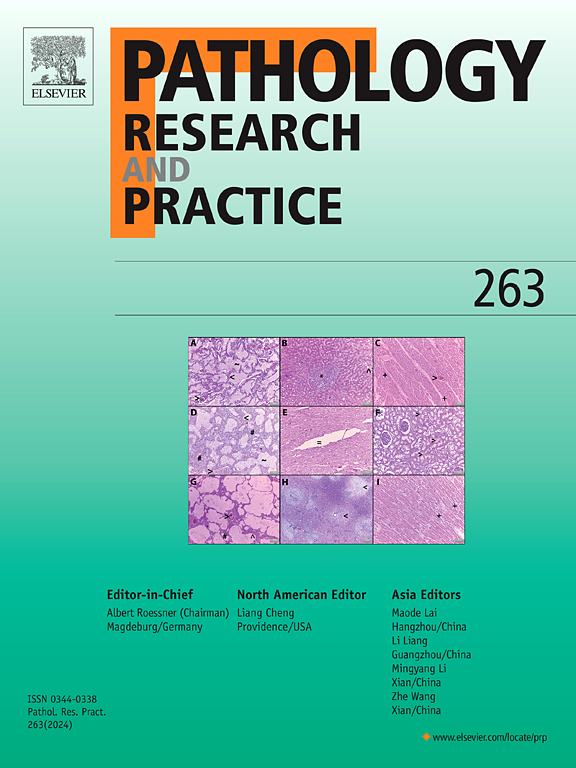A floating collagen matrix triggers ring formation and stemness characteristics in human colorectal cancer organoids
IF 2.9
4区 医学
Q2 PATHOLOGY
引用次数: 0
Abstract
Intestinal organoids reflect the 3D structure and function of their original tissues. Organoid are typically cultured in Matrigel, an extracellular matrix (ECM) mimicking the basement membrane, which is suitable for epithelial cells but does not accurately mimic the tumour microenvironment of colorectal cancer (CRC). The ECM and particularly collagen type I is crucial for CRC progression and invasiveness. Given that efforts to examine CRC organoid invasion in a more physiologically relevant ECM have been limited, we used a floating collagen type I matrix (FC) to study organoid invasion in three patient-derived CRC organoid lines. In FC gel, organoids contract, align, and fuse into macroscopic ring structures, initiating minor branch formation and invasion fronts, phenomena unique for the collagen ECM and otherwise not observed in Matrigel-grown CRC organoids. In contrast to Matrigel, FC organoids showed basal extrusion with improper actin localization, but without change in the organoid polarity. Moreover, small clusters of vital invading cells were observed. Gene expression analysis revealed that the organoids cultured in a FC matrix presented more epithelial and stem cell-like characteristics. This novel technique of cultivating CRC organoids in a FC matrix represents an in-vitro model for studying cancer organization and matrix remodelling with increased organoid stemness potential.
求助全文
约1分钟内获得全文
求助全文
来源期刊
CiteScore
5.00
自引率
3.60%
发文量
405
审稿时长
24 days
期刊介绍:
Pathology, Research and Practice provides accessible coverage of the most recent developments across the entire field of pathology: Reviews focus on recent progress in pathology, while Comments look at interesting current problems and at hypotheses for future developments in pathology. Original Papers present novel findings on all aspects of general, anatomic and molecular pathology. Rapid Communications inform readers on preliminary findings that may be relevant for further studies and need to be communicated quickly. Teaching Cases look at new aspects or special diagnostic problems of diseases and at case reports relevant for the pathologist''s practice.

 求助内容:
求助内容: 应助结果提醒方式:
应助结果提醒方式:


